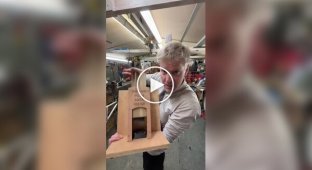Harmony - a Unique Mining Complex That Has Become a Historical Landmark (7 photos)
This crumbling mining complex in Death Valley was known for its use of giant wagons pulled by 20 mules. 
The Harmony Mill was central to the discovery of Death Valley and the subsequent popularity of the Furnace Creek area. The mill and its associated community played an important role in the history of Death Valley. 
After borax, a borate mineral that is the raw material for boron, was discovered near Furnace Creek Ranch (then called Greenland) in 1881, William T. Coleman built the Harmony Mill and began processing the ore in late 1883 or early 1884. When the mill was in full operation, it employed 40 men, processing three tons of borax daily. 
During the summer months, when the weather was so hot that the processing water did not have time to cool enough to allow the suspended borax to crystallize, Coleman transferred his workers to the borax plant in Amargosa. 
Getting the finished product to market from the heart of Death Valley was no easy task, and an efficient way had to be found. The Harmony mill became famous for its use of large mule teams and double wagons to haul borax over the long overland route to the Mojave. The romantic image of the "20-mule team" remains to this day and has become a symbol of the industry in the country. 
The Harmony mill ceased operations in 1888 after only five years of operation, when Coleman's financial empire collapsed. 
Purchased by Francis Marion Smith, the plant never resumed production and eventually became part of the borax stockpiles of the Pacific Coast Borax Company and its successors. The property was listed on the National Register of Historic Places on December 31, 1974. 
Amidst the crumbling, dilapidated walls that mark the site of the main building, several old iron stoves and other artifacts can still be seen. Also preserved is one of the double wagons used to haul borax. The dozens of mules that pulled the wagons are, fortunately, no longer around.





















